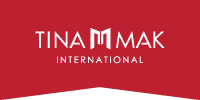Obama eyes Canada as bank model
Toronto Star David Olive BUSINESS COLUMNIST
Barack Obama, contemplating sweeping reforms to the U.S. financial system, cited Canada as a model worth emulating in an interview published yesterday.
"You know, I've looked at the evidence so far that indicates that other countries that have not seen some of the problems in their financial markets that we have nevertheless don't separate between investment banks and commercial banks," the U.S. president told New York Times economics columnistDavid Leonhart in a Times Magazine cover story yesterday. "They have a `supermarket' model that they've got strong regulation of."
"Like Canada?" Leonhart asked.
"Canada being a good example," Obama said. "And they've actually done a good job in managing through what was a pretty risky period in the financial markets."
"When it comes to something like investment banking versus commercial banking," Obama said, "the experience in a country like Canada would indicate that good, strong regulation that focuses less on the legal form of the institution and more on the functions that they're carrying out is probably the right approach to take."
Obama praised Canada's banking system in an earlier interview, in advance of the G20 meeting of world leaders in London last month. His more recent comments suggest Obama's economic team is closer to deciding on an approach to a long-anticipated overhaul of financial regulation in America, where the current global financial crisis has its origins.
Wall Street observers worry Obama might push for a breakup of America's largest banks and other financial institutions, often deemed "too big to fail," in order to make them easier to manage prudentially and to regulate.
At the very least, a rough consensus of observers believe, Obama would reinstitute the divorce of commercial from investment banking that Franklin Roosevelt forced in 1933, and which remained in effect until 1999. Not long after, America's disastrous housing boom got underway along with the distribution of "toxic" U.S. subprime, or `junk'," mortgages to lenders worldwide.
But the "Canadian option" of stricter regulations and stronger enforcement of them by a beefed-up existing regulatory regime would best fit Obama's approach of tweaking, rather than overturning, the status quo.
Canadian banks are limited by federal regulation to $20 in loans and other investments for each $1 in capital. The "reserve ratio" in the U.S. and Europe ranges as high as 40:1, a level of risk that some of the biggest world banks proved unable to handle when the U.S. housing boom collapsed in 2007 and default rates on mortgages soared.
All of Canada's six largest banks follow the supermarket model, having absorbed the securities industry and the trust sector in the 1980s. Only insurance, in which the banks merely dabble, remains mostly outside the banks' ambit, despite years of bank lobbying of Ottawa to allow the marketing of a wider range of insurance products.
As a result of their largely shunning the purchase of multimillion-dollar packages of U.S. junk mortgages, Canadian banks have earned international acclaim for their continued sound condition. But that had nothing to do with the Canadian banks' size or diversity of functions, and everything to do with prudent risk decisions and scrupulous regulatory supervision.
Canada's five largest banks now are among the 50 most valuable in the world. A decade ago, none were in those ranks.


